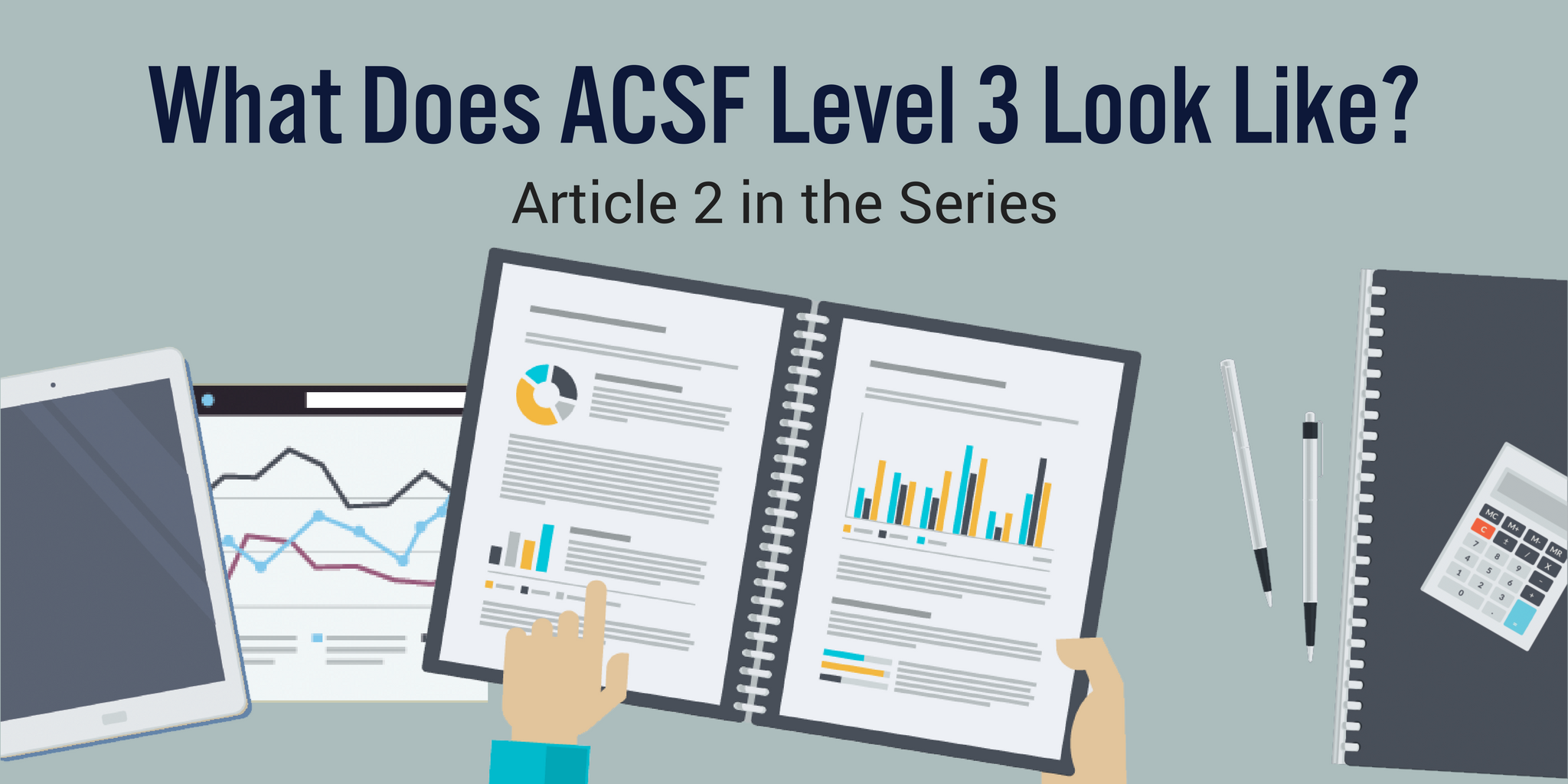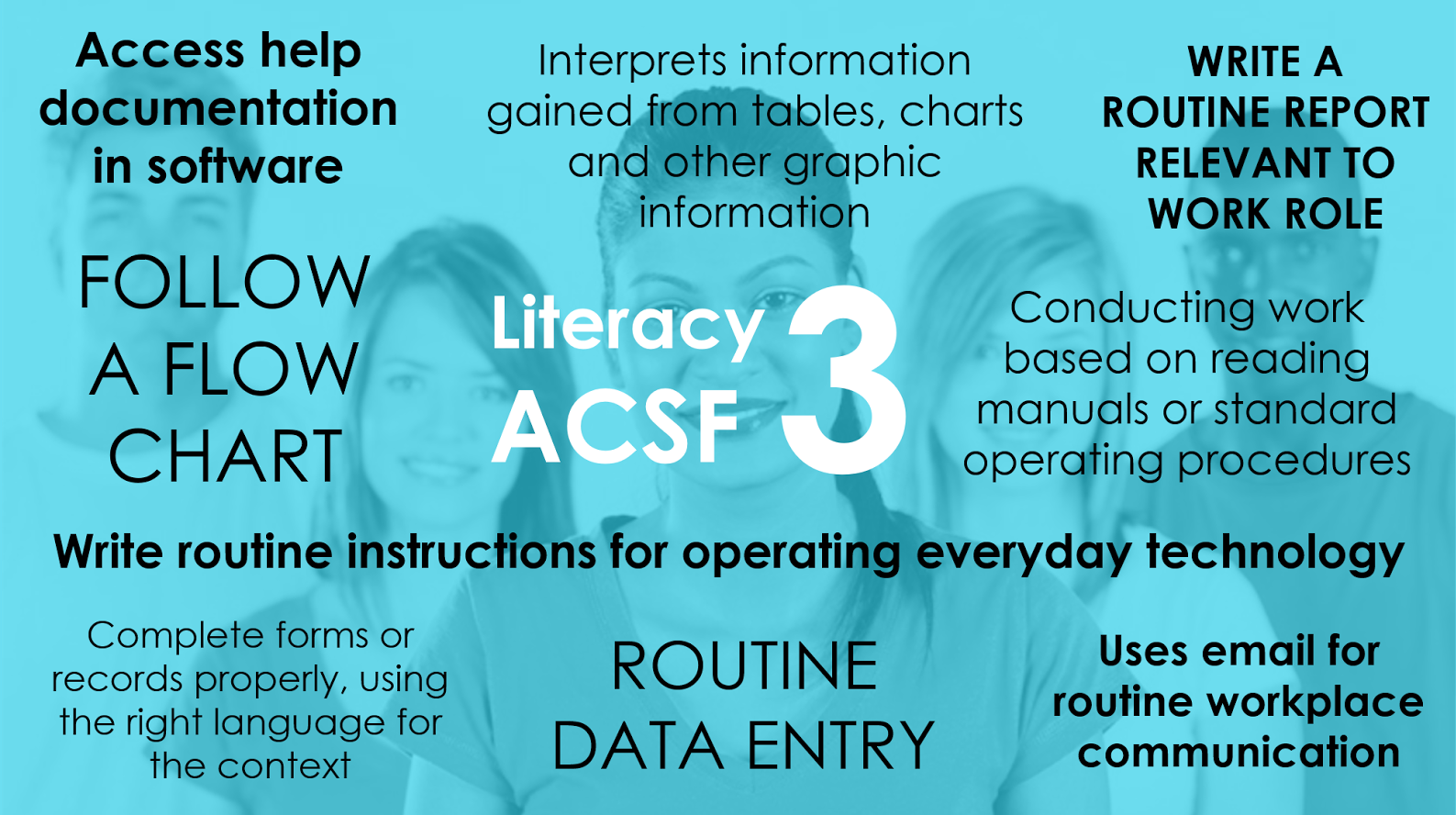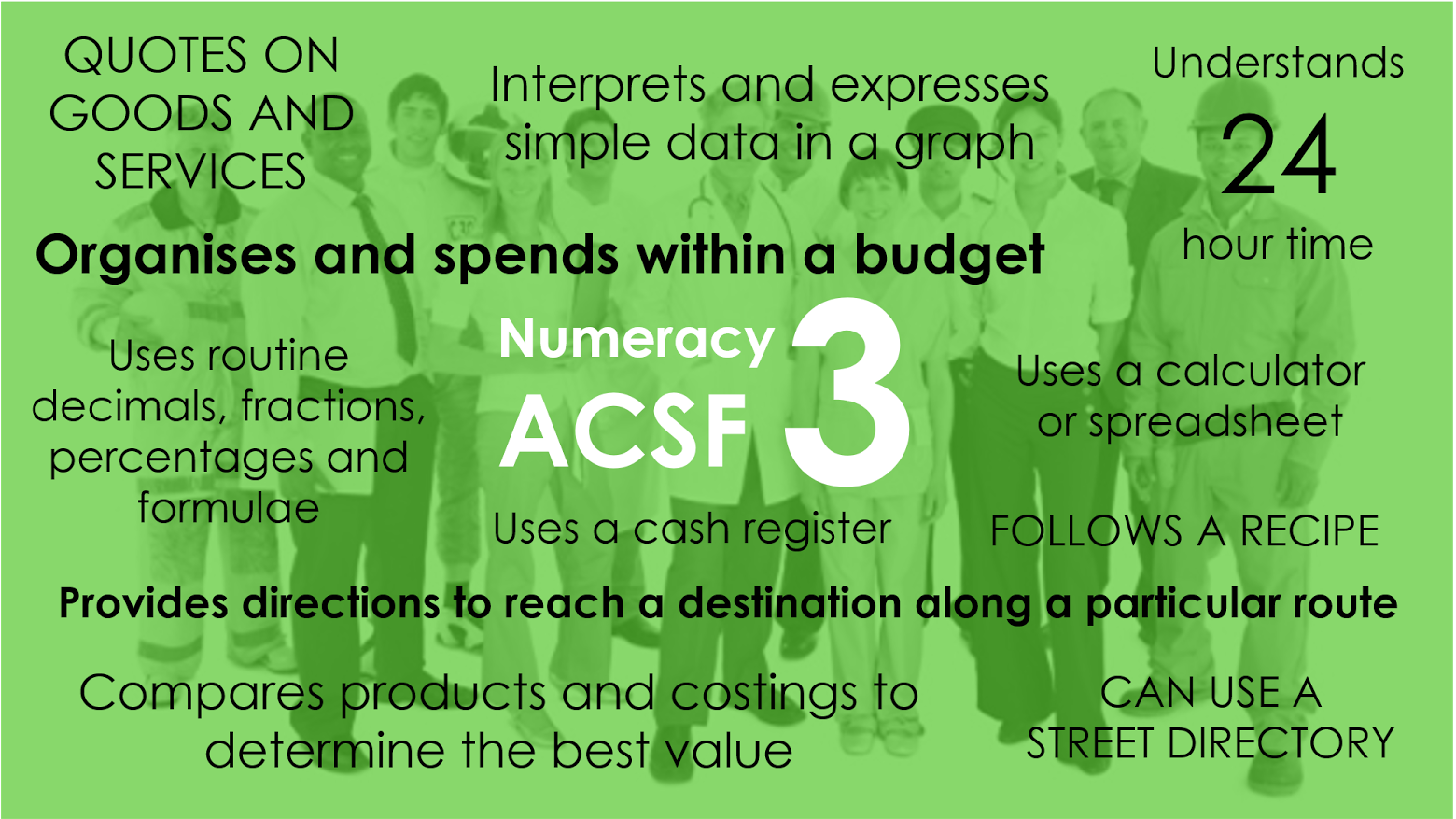Generative AI is transforming vocational training in Australia. Here are 8 practical ways to enhance training delivery, save time, and boost learner outcomes ethically.
News
Back to NewsWhat Does ACSF Level 3 Look Like?

If you’ve been paying attention to the VET FEE-HELP and VET Student Loans saga over the last few years you may have come across the phrase ‘exit level 3’. This is referring to a person demonstrating that they have reading and numeracy skills that meet all of the level 3 criteria of the Australian Core Skills Framework (in reading and numeracy).
That explanation is fantastic if you have a deep knowledge and understanding of the ACSF. For those of you that don’t, I’m going to break it down into a list of things that a person with this level of ability should be able to consistently do. The purpose of this article is to give you a recognisable snapshot of these skills to help you to understand the ACSF in the context of your own cohort of learners.
ACSF Level 3 Literacy
For the purposes of this explanation I am going to refer to ‘literacy’ as a combination of a person’s ability to read and write in English.
The image below lists a few examples of things that a person with level 3 literacy skills should be able to do. This is generally considered as using the English language at a ‘competent’ level.
The examples have been taken from the employment and training domains of the ACSF:

You might have noticed how often the word ‘routine’ shows up. At level 3 we are dealing with information that is generally familiar to us (or that we use on a daily basis).
ACSF Level 3 Numeracy
The following image gives you a breakdown of the kinds of things that a person with level 3 numeracy skills should be able to do. These examples have been taken from the employment and community domains of the ACSF:

You will notice that numeracy covers a broad range of abilities from mathematical applications to spacial awareness to graphic data representation. Once again, the complexity of the tasks and information are limited to routine conditions.
I hope that this article gives you a starting point of reference in gauging how the ACSF relates to the courses. As always, if you are interested in learning more you should visit the ACSF website here.
This is the second article in a series on foundation skills that will be published over the next few weeks leading up to a presentation on this topic being delivered (by yours truly) at the National VET Conference 2017 in Sydney. You can read the first article here. This series aims to explore what foundation skills are, how to determine a learner’s needs for developing foundation skills and how to go about supporting them throughout the learning experience.
ABOUT THE AUTHOR
David Cunning

David Cunning is the General Manager of The Learning Resources Group. He has been in the VET sector for 12 years and has spent the best part of the last decade managing the creation of training and assessment resources for over 300 units of competency. He was the driving force behind the LLN Robot System of assessing and supporting vocational education students across the country.
Dave has invested himself in understanding the industry by attaining his Certificate IV in Training and Assessment and also a Diploma of Vocational Education and Training and a Diploma in Training Design and Development.
Prior to working in the VET sector, Dave was a psychology graduate and a graphic artist who ran his own independent publishing house.
Outside of TLRG office, Dave was voted the world's greatest dad by a 2/3 majority of his 3 sons. He is an amateur e-sports participator, avid motorcycle accumulator and aspires to be the single largest consumer of 2-minute noodles in the southern hemisphere.